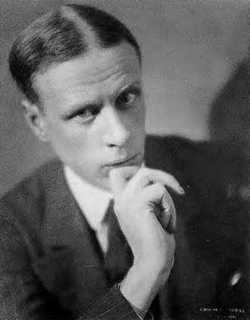Charles Macomb Flandrau (1871-1938) ...best known for his 1909 travel book Viva Mexico! He was born in St.
Paul, Minnesota, the son of noted lawyer Charles Eugene Flandrau, educated at Harvard but didn't receive a degree. His experiences there formed the basis of his first book Harvard
Episodes (1897). This small book was read by those who felt it's sting, and those who rejoiced at the snob-set getting a come-uppance. Commissioned pieces for the Saturday Evening Post followed as Flandrau became a popular contributor at the turn of the century.
Lawrence Peter Haeg has written two books on Flandrau: Little Corners of Great Places: The Private Life of Charles Macomb Flandrau (1981) and In Gatsby's Shadow Shadow : The Story of Charles Macomb Flandrau (2004).
Lawrence Peter Haeg has written two books on Flandrau: Little Corners of Great Places: The Private Life of Charles Macomb Flandrau (1981) and In Gatsby's Shadow Shadow : The Story of Charles Macomb Flandrau (2004).
I certainly enjoyed this book. As it was night time reading, I did it in small bites and enjoyed savoring it and also the after taste. My objection is to the title as it has so little to do with F. Scott Fitzgerald

Larry Haeg observes, "Flandrau felt literature was being prostituted, monetized, taken under the tent of the new mass media, and made a cultural circus featuring what he called 'trained performers"
Theodore Roosevelt often stayed on the Flandrau house when he was in Saint Paul. The families were frequent correspondents. Many of the letters are archived in the Theodore Roosevelt Collection at the State University of Dickenson, Dickenson North Dakota"Flandrau, a model of style and worldly sophistication and destined, almost everyone agreed, for greatness, was among the most talented young writers of his generation. His short stories about Harvard in the 1890s were called “the first realistic description of undergraduate life in American colleges”
Yet Flandrau turned his back on it all. Financially independent, he chose a solitary, epicurean life in St. Paul, Mexico, Majorca, Paris, and Normandy. In later years, he confined his writing to local newspaper pieces and letters to his small circle of family and friends."
"Using excerpts from these newspaper columns and unpublished letters, Larry Haeg has painstakingly recreated the story of this urbane, talented, witty, lazy, enigmatic, supremely private man who never reached the peak of literary success to which his talent might have taken him."(from publisher, Iowa University Press)
I have now also read Viva Mexico. He shares observations of life on his brother's coffee plantation. He carefully reports about growing coffee, the scenery, the workers, and the visitors. Interesting that in 1908 there wasn't a genre for memoirs which is where I will shelve it.

President Theodore Roosevelt's Letter
upon receiving Viva Mexico as a gift from
the Theodore Roosevelt collection at The
State University of Dickenson in Dickenson,
North Dakota
I was interested in finding out more about Larry Haeg and borrowed his new (2013) book, Harriman vs. Hill from the library. Too much "Wall Street" and banking talk for me but I am enjoying the personal portraits. Informative descriptions of the actual railroad building and the agricultural history continue to be good reasons to stick with it. There is a big demand for this book in our library system.
photos from the article "In Search of the Real Grace Flandrau" by Georgia Ray
Minnesota History, Summer 1999





















































